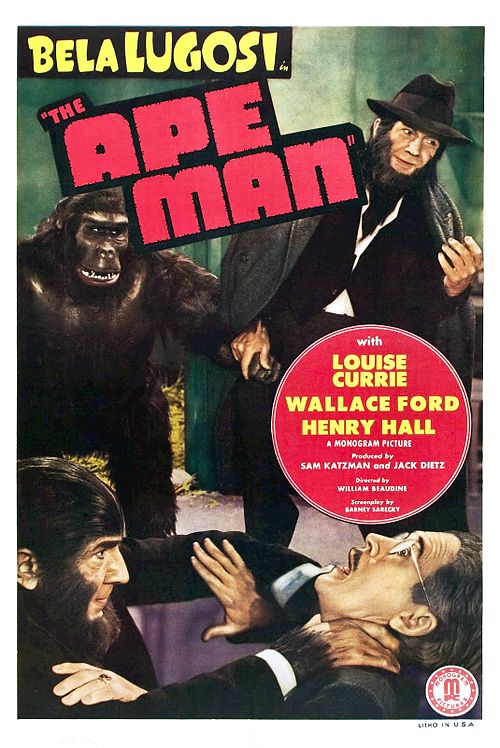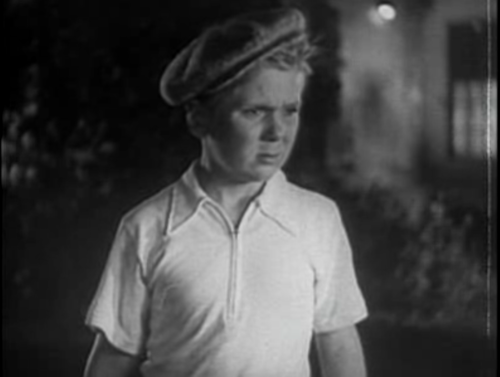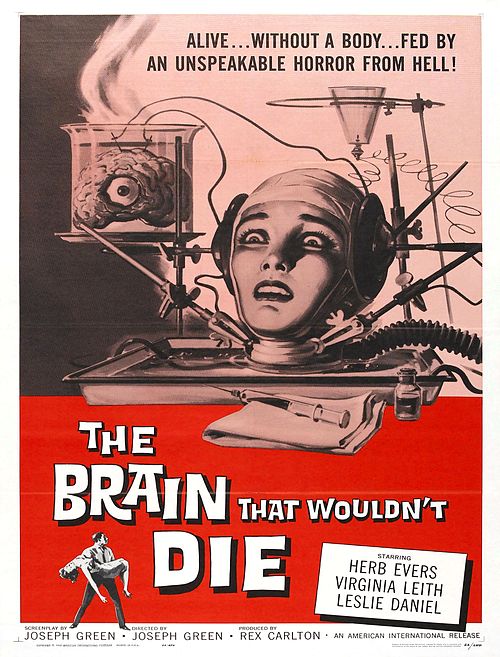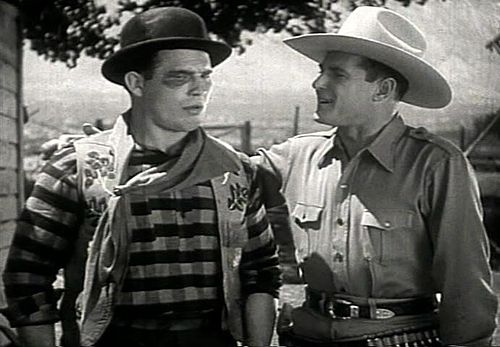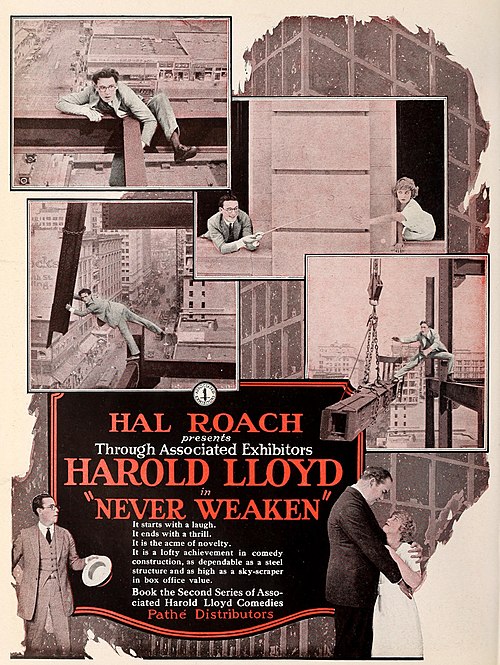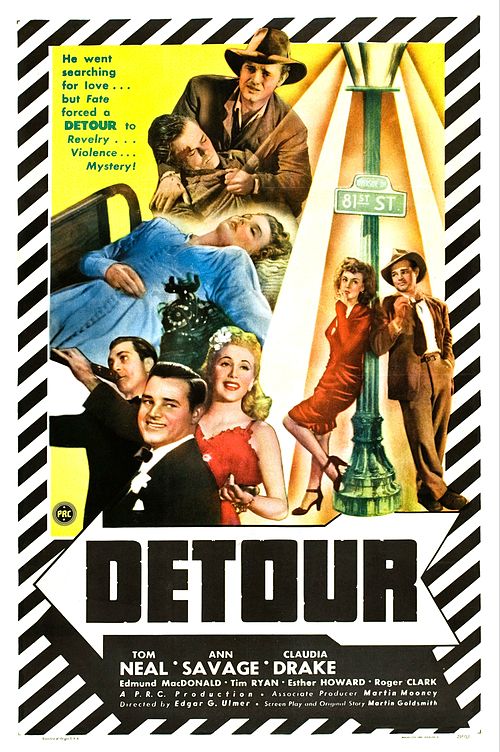Advertisement
Image source: Internet Archive (archive.org)
Download Movie [Video Format: MP4]
Movie Source: Internet Archive (archive.org)
Advertisement
Advertisement
Night of the Living Dead (1968) - restored
1968
The classic original but with the editing mistakes and jump cuts fixed. A superior cut to any other.
File:Night of the Living Dead (1968).webm
Night of the Living Dead is a 1968 American independent film zombie film directed by George A. Romero, starring Duane Jones, Judith O'Dea and Karl Hardman. It premiered on October 1, 1968, and was completed on a US$114,000 budget. The film became a financial success, grossing $12 million Cinema of the United States and $18 million internationally. It has been a cult classic ever since. Night of the Living Dead was heavily criticized at its release owing to explicit content, but eventually garnered critical acclaim and has been selected by the Library of Congress for preservation in the National Film Registry as a film deemed "culturally, historically or aesthetically significant."< name="CNN"/>< name="PM"></> The film has entered the public domain due to an error by the distributor.< name="PM"/>< name="publicdomain"></>
The story follows characters Ben (Duane Jones)<!----Do not change this character's name, nor add a last name for him, the character is called simply 'Ben' in the film and in the credits, no further name is ever given to him.-->, Barbra (Judith O'Dea), and five others trapped in a rural farmhouse in Pennsylvania which is attacked by unnamed "living dead" monsters, drawing on earlier depictions in popular culture of zombie (fictional). Night of the Living Dead was the basis of five subsequent Night of the Living Dead (film series) films (1978–2010) also directed by Romero, and has inspired remakes.< name="PM"/>
Plot summary
Barbra (Judith O'Dea) and Johnny (Russell Streiner) drive to rural Pennsylvania for an annual visit to their father's grave, at their mother's request. Noticing Barbra's discomfort, Johnny teases, "They're coming to get you, Barbra", before she is attacked by zombie (fictional) (Bill Hinzman). Johnny tries to rescue his sister, but falls and bashes his head on a gravestone, killing himself. Barbra flees by car but almost instantly crashes into a tree. With the man in pursuit, she starts running, which includes the Costume de rigueur#Related terms stumble-and-fall and the loss of her shoes. She arrives at a farmhouse where, to her horror, she discovers a woman's mangled corpse. Running out of the house, she is confronted by strange menacing figures like the man in the graveyard. Ben (Duane Jones) arrives in a truck and takes her back inside the house. Barbra slowly descends into acute stress reaction and insanity as Ben drives the monsters from the house and begins boarding up the doors and windows.File:Zombies NightoftheLivingDead.jpg
Ben and Barbra are unaware that the farmhouse has a cellar, which is housing an angry married couple Harry (Karl Hardman) and Helen Cooper (Marilyn Eastman) and their daughter Karen (Kyra Schon), who sought uge after a group of zombies overturned their car; and teenage couple Tom (Keith Wayne) and Judy (Judith Ridley), who arrived after hearing an emergency broadcast about a series of brutal murders. Karen has fallen seriously ill after being bitten on the arm by one of the zombies. They venture upstairs when Ben turns on a radio, while Barbra awakens from a stupor. The overbearing, self-righteous Harry demands that everyone hide in the cellar, but Ben deems it a "deathtrap" and remains upstairs, continuing to barricade the house with Tom's help.
Radio reports explain that a state of mass murder is sweeping across the eastern United States. When Ben finds a television, the emergency broadcaster reports that the recently deceased have become reanimated and are consuming the flesh of the living. Experts, scientists, and the United States military fail to discover the cause, though one scientist suspects radioactive contamination from a space probe returning from Venus, which was deliberately exploded in the Earth's atmosphere when the radiation was detected.
File:CooperFamily.jpg
When the reports list local rescue centers offering uge and safety, Ben plans to leave and obtain medical care for Karen. Tom states that the closest center is in the town of Willard, several miles away. Ben and Tom venture outside to uel Ben's truck, while Harry hurls Molotov cocktails from an upper window to keep the "undead" at bay. Fearing for Tom's safety, Judy follows him. At the pump, Tom accidentally spills gasoline on the truck, setting it ablaze. Tom and Judy try to drive the truck away from the pump, but Judy gets her jacket caught in the car door and is unable to free herself. The truck explodes, instantly killing both Tom and Judy and setting their corpses on fire.
Ben flees back to the house, but finds himself locked out by Harry. He pounds on the door and shouts without result, finally kicking the door in. Angered by Harry's cowardice, Ben issues him a sound beating, while the undead feed on the remains of Tom and Judy. In the house, a news report reveals that, aside from setting the "reactivated bodies" on fire, a gunshot or heavy blow to the head will stop them, and that posse comitatus (common law) of armed men are patrolling the countryside to restore order.
Moments later, the lights go out and the living dead begin to break through the barricades. Harry grabs Ben's rifle and threatens to shoot him, but Ben wrestles the gun away and fires. Mortally wounded, Harry stumbles into the cellar and collapses next to Karen, who has also died from her illness. The undead try to pull Helen and Barbra through the windows, but Helen frees herself and goes down into the cellar - to find a reanimated Karen eating Harry. Helen, paralyzed by shock, falls as Karen stabs her to death with a masonry trowel. Barbra, seeing Johnny among the living dead, is carried away by the horde and devoured. The undead overrun the house, and Ben fights off Karen as he seals himself inside the cellar. He finds Harry and Helen starting to reanimate and shoots them.
The next morning, Ben is awakened by gunshots as sheriff's department deputies move through the fields, shooting all the zombies they find. Venturing upstairs, he is killed by a member of the posse, who seemingly mistook him for an undead. The film ends with a series of still shots as Ben is placed onto a burning pyre, along with other dead bodies.
Cast
}- Duane Jones as Ben: The lead role of Ben was played by unknown stage actor Duane Jones. His performance depicted Ben as a "comparatively calm and resourceful Negro" (in real life, a distinguished gentleman and former university professor), according to a movie reviewer in 1969.</> Despite his other film roles, Jones worried that people only recognized him as Ben.}}
Official film adaptations of Matheson's novel appeared in 1964 as The Last Man on Earth (1964 film), in 1971 as The Omega Man, and the 2007 release I Am Legend (film). Matheson was not impressed by Romero's interpretation, feeling that "It was ... kind of cornball",
Russo and Romero revised the screenplay while filming. Karl Hardman attributed the edits to lead actor Duane Jones:
Eastman modified cellar scenes featuring dialogue between Helen and Harry Cooper. One example offered by O'Dea concerns a scene where Barbra tells Ben about Johnny's death:
Filming
Principal photography
File:EvansCityCemetery PA.jpg Cemetery in 2007.}}}
The small budget dictated much of the production process. According to Hardman, "We knew that we could not raise enough money to shoot a film on a par with the classic horror films with which we had all grown up. The best that we could do was to place our cast in a remote spot and then bring the horror to be visited on them in that spot".< name="Hardman/Eastmaninterview"/> Scenes were filmed near Evans City, Pennsylvania, Pennsylvania, north of Pittsburgh in rural Butler County, Pennsylvania; the opening sequence was shot at the Evans City Cemetery on Franklin Road, south of the borough. The interior upstairs scenes were filmed in a downtown Evans City home that later became the offices of a prominent local physician and family doctor (Allsop). This home is still standing on South Washington St. (locally called Former state routes in Pennsylvania#PA 855), between the intersecting streets of South Jackson and Van Buren. The cemetery chapel was under warrant for demolition; however, Gary R. Steiner led a successful effort to raise $50,000 to restore the building, and the chapel is currently undergoing renovations.< name="fix"></>< name="trib"></>
The outdoor, indoor (downstairs) and basement scenes were filmed at a location northeast of Evans City, near a park. The basement door (external view) shown in the film was cut into a wall by the production team and led nowhere. As this house was scheduled for demolition, damage during filming was permitted. The site is now a Sod.</> Romero's decision to direct Night of the Living Dead essentially launched his career as a horror director. He took the helm of the sequels as well as Season of the Witch (1972 film) (1972), The Crazies (1973 film) (1973), Martin (film) (1977), Creepshow (1982) and The Dark Half (film) (1993).
Sound effects were created by WRS Studio in Pittsburgh. "Sound engineer Richard Lococo recorded all of the live sound effects used in the film". Lococo recalled, "Of all the sound effects that we created, the one that still gives me goose bumps when I hear it, is Marilyn's screaming as [Helen Cooper] is killed by her daughter. Judy O'Dea's screaming is a close second. Both were looped in and out of echo over and over again".
Soundtrack
| Recorded =
| Genre = Soundtrack
| Label = Varèse Sarabande
| Producer = Scot W. Holton
| Compiler = Scot Holton
}}
The musical score was a re-use of the music soundtrack from The Hideous Sun Demon (1959) in the public domain.
A soundtrack album featuring music and dialogue cues from the film was compiled and released on LP by Varèse Sarabande in 1982; it has never been reissued on CD. In 2008, recording group 400 Lonely Things released the album Tonight of the Living Dead, "an instrumental album composed entirely of ambient music and sound effects sampled from Romero's 1968 horror classic".
In 2010, the record company Zero Day Releasing released the CD They Won't Stay Dead!: Music from the soundtrack of Night of the Living Dead. It features all-new digitally restored audio from original library LPs and reels.
Controversy
Night of the Living Dead premiered on October 1, 1968 at the Fulton Theater in Pittsburgh. The Motion Picture Association of America film rating system was not in place until November 1968, so even young children were not prohibited from purchasing tickets. Roger Ebert of the Chicago Sun-Times] chided theater owners and parents who allowed children access to the film with such potent content for a horror film they were entirely unprepared for. "I don't think the younger kids really knew what hit them," he said. "They were used to going to movies, sure, and they'd seen some horror movies before, sure, but this was something else." According to Ebert, the film affected the audience immediately:< name="Ebertreview"/>
Response from Variety Film Reviews after the initial release lects the outrage generated by Romero's film: "Until the Supreme Court establishes clear-cut guidelines for the pornography of violence, Night of the Living Dead will serve nicely as an outer-limit definition by example. In [a] mere 90 minutes this horror film (pun intended) casts serious aspersions on the integrity and social responsibility of its Pittsburgh-based makers, distributor Walter Reade, the film industry as a whole and [exhibitors] who book [the picture], as well as raising doubts about the future of the regional cinema movement and about the moral health of film goers who cheerfully opt for this unrelieved orgy of sadism..."<></>
One commentator asserts that the film garnered little attention from critics, "except to provoke argument about censorship its grisly scenes".</> and it is regarded by many as one of the best films of 1968.<></><></><></> In 2008, the film was ranked by Empire (film magazine) magazine No. 397 of The 500 Greatest Movies of All Time.<></> The New York Times also placed the film on their Best 1000 Movies Ever list.<></> In January 2010, Total Film included the film on its list of The 100 Greatest Movies of All Time.<></> Rolling Stone magazine named Night of the Living Dead one of The 100 Maverick Movies in the Last 100 Years.<></>
Night of the Living Dead was also awarded two distinguished honors decades after its debut. The Library of Congress added the film to the National Film Registry in 1999 with other films deemed "culturally, historically or aesthetically significant".</> The Chicago Film Critics Association named it the 5th scariest film ever made.<></> The film also ranked No. 9 on Bravo (U.S. TV channel)'s </>
Critical response
Reviewers disliked the film's gory special effects. Variety (magazine) labeled Night of the Living Dead an "unrelieved orgy of Sadomasochism" and questioned the "integrity and social responsibility of its Pittsburgh-based makers". Romero confessed that the film was designed to lect the tensions of the time: "It was 1968, man. Everybody had a 'message'. The anger and attitude and all that's there is just because it was the Sixties. We lived at the farmhouse, so we were always into raps about the implication and the meaning, so some of that crept in".< name="RomeroJones"/>
Other commentators, most notably Chris Iacovelli, assert that this is a film classic and should be praised for its ground-breaking and thought-provoking approach to bringing the discussion of man’s disregard and aversion to others outside their class/caste/ethnicity from the halls of academia and into the homes of mainstream America.
Influence
File:Girl zombie eating her victim Night of the Living Dead bw.jpg
Romero revolutionized the horror film genre with Night of the Living Dead; according to Almar Haflidason of the BBC, the film represented "a new dawn in horror film-making".</> Another colorized version appeared in 1997 from Anchor Bay Entertainment with grey-skinned zombies.</> In 2009, Legend Films coproduced a colorized 3D film version of the film with PassmoreLab, a company that converts 2-D film into 3-D format.<></> The film was theatrically released on October 14, 2010.<></> According to Legend Films founder Barry Sandrew, Night of the Living Dead is the first entirely live action 2-D film to be converted to 3-D.<></><></>
In 1999, co-writer John A. Russo released a modified version called Night of the Living Dead: 30th Anniversary Edition.</>
A collaborative animated project known as Night of the Living Dead: Reanimated was screened at several film festivals<></><></><></><></> and was released onto DVD on July 27, 2010 by Wild Eye Releasing.</><></><></> This project aims to "reanimate" the 1968 film by replacing Romero's celluloid images with animation done in a wide variety of styles by artists from around the world, laid over the original audio from Romero's version.</> at the Zombie Encounter and Film Festival.<></> Night of the Living Dead: Reanimated was nominated in the category of Best Independent Production (film, documentary or short) for the 8th Annual Rondo Hatton Classic Horror Awards, but lost to American Scary, a documentary on television </>
In 2009, Michael J. Nelson of Mystery Science Theater 3000 fame released a single-person "riff" on the movie, providing humorous commentary through the course of the movie. Later a revision was made featuring Nelson along with Bill Corbett and Kevin Murphy (actor) who had previously worked with Nelson on Mystery Science Theater 3000. The movie is available as downloadable video file or as a DVD through the group's website RiffTrax which is under the influence of Legend Films.<></>
Film series
Romero's Dead films
Night of the Living Dead is the first of six ...of the Dead films directed by George Romero. Following the 1968 film, Romero released Dawn of the Dead, Day of the Dead (1985 film), Land of the Dead, Diary of the Dead and Survival of the Dead. Each film traces the evolution of the living dead epidemic in the United States and humanity's desperate attempts to cope with it. As in Night of the Living Dead, Romero peppered the other films in the series with critiques specific to the periods in which they were released.
Return of the Living Dead series
The same year Day of the Dead premiered, Night of the Living Dead co-writer John Russo released a film titled The Return of the Living Dead that offers an alternate continuity (fiction) to the original film than Dawn of the Dead, but acted more as a parody or satire and is not considered a sequel to the original 1968 film. Russo's film spawned four Return of the Living Dead (film series). Return of the Living Dead sparked a legal battle with Romero, who believed Russo marketed his film in direct competition with Day of the Dead as a sequel to the original film. In the case Dawn Associates v. Links, Romero accused Russo of "appropriat[ing] part of the title of the prior work", plagiarism Dawn of the Dead's advertising slogan ("When there is no more room in hell [...] the dead will walk the earth"), and copying stills from the original 1968 film. Romero was ultimately granted a restraining order that forced Russo to cease his advertising campaign. Russo, however, was allowed to retain his title.</>
On September 15, 2009, it was announced that Simon West planned a 3D retelling of the original movie, to be titled Night of the Living Dead: Origins 3D.<></><></> The movie is being written and directed by Zebediah de Soto. The cast includes Tony Todd as Ben, Danielle Harris as Barbra, Joseph Pilato as Harry Cooper, Alona Tal as Helen Cooper, Bill Moseley as Johnny, Tom Sizemore as Chief McClellan and newcomers Erin Braswell as Judy and Michael Diskint as Tom.<></><></><></><></><></><></>
Director Doug Schulze's 2011 film Mimesis (a.k.a. Mimesis: Night of the Living Dead) relates the story of a group of horror film fans who become involved in a "real-life" version of the 1968 film.<></><></>
Copyright status
Night of the Living Dead entered the public domain because the original theatrical distributor, the Walter Reade Organization, neglected to place a copyright indication on the prints. In 1968, Copyright law of the United States required a proper notice for a work to maintain a copyright.Night of the Living Dead at . Retrieved February 28, 2013.</>
See also
- Night of the Living Dead (film series)
- List of films considered the best
- List of films in the public domain in the United States
Further reading
- Becker, Matt. "A Point of Little Hope: Hippie Horror Films and the Politics of Ambivalence". Velvet Light Trap (No. 57, Spring 2006): pp. 42–59.
- Carroll, Noël. "The Nature of Horror". The Journal of Aesthetics and Art Criticism 46 (No. 1, Autumn 1987): pp. 51–59.
- Crane, Jonathan Lake. Terror and Everyday Life: Singular Moments in the History of the Horror Film. Thousand Oaks, Calif.: Sage Publications, 1994. ISBN 978-0-8039-5849-4.
- Dinello, Daniel. Technophobia!: Science Fiction Visions of Posthuman Technology. Austin: University of Texas Press, 2006. ISBN 978-0-292-70986-7.
- Harper, Stephen. "Night of the Living Dead: Reappraising an Undead Classic". Bright Lights Film Journal (Issue 50, November 2005): online.
- Heffernan, Kevin. Ghouls, Gimmicks, and Gold: Horror Films and the American Movie Business, 1953–1968. Durham, N.C.: Duke University Press, 2004. ISBN 978-0-8223-3215-2 .
- Heffernan, Kevin. "Inner-City Exhibition and the Genre Film: Distributing Night of the Living Dead (1968)". Cinema Journal 41 (No. 3, Spring 2002): pp. 59–77.
- Jancovich, Mark, Antonio Lazaro Reboll, Julian Stringer, and Andy Willis, eds. Defining Cult Movies: The Cultural Politics of Oppositional Taste. Manchester, Eng.: Manchester University Press, 2003. ISBN 978-0-7190-6631-3
- Lowenstein, Adam. Shocking Representation: Historical Trauma, National Cinema, and the Modern Horror Film. New York: Columbia University Press, 2005. ISBN 978-0-231-13246-6.
- Maye, Harun. "Rewriting the Dead: The Tension between Nostalgia and Perversion in George A. Romero's Night of the Living Dead (1968)". In: Nostalgia or Perversion? Gothic Rewriting from the Eighteenth Century until the Present Day. Ed. Isabella van Elferen. Newcastle: Cambridge Scholars Publishing 2007. ISBN 978-1-84718-247-0.
- Moreman, Christopher M. "A Modern Meditation on Death: Identifying Buddhist Teachings in George A. Romero's Night of the Living Dead," Contemporary Buddhism 9 (No. 2, 2008): pp. 151–165.
- Newman, Robert. "The Haunting of 1968". South Central Review 16 (No. 4, Winter 1999): pp. 53–61.
- Kim Paffenroth. Gospel of the Living Dead: George Romero's Visions of Hell on Earth. Waco, Texas: Baylor, 2006. ISBN 978-1-932792-65-2.
- Pharr, Mary. "Greek Gifts: Vision and Revision in Two Versions of Night of the Living Dead". In Trajectories of the Fantastic. Ed. Michael A. Morrison. Westport, Conn.: Greenwood Publishing Group, 1997. ISBN 978-0-313-29646-8.
- Pinedo, Isabel Cristina. Recreational Terror: Women and the Pleasures of Horror Film Viewing. Albany: State University of New York Press, 1997. ISBN 978-0-7914-3441-3.
- Poole, W. Scott. Monsters in America: Our Historical Obsession with the Hideous and the Haunting. Waco, Texas: Baylor, 2011. ISBN 978-1-60258-314-6.
- Russell, Jamie. Book of the Dead: The Complete History of Zombie Cinema. Surrey: Fab Press, 2005. ISBN 978-1-903254-33-2.
- Shapiro, Jerome F. Atomic Bomb Cinema: The Apocalyptic Imagination on Film. London: Routledge, 2001. ISBN 978-0-415-93660-6.
- Robin Wood (critic). Hollywood from Vietnam to Reagan. New York: Columbia University Press, 1986. ISBN 978-0-231-05777-6.
- Young, Lola. Fear of the Dark: 'Race', Gender and Sexuality in the Cinema. London: Routledge, 1996. ISBN 978-0-415-09709-3.
Category:1968 films
Category:1968 horror films
Category:1960s science fiction films
Category:American films
Category:American independent films
Category:American science fiction horror films
Category:Black-and-white films
Category:Directorial debut films
Category:English-language films
Category:Films directed by George A. Romero
Category:Films set in Pennsylvania
Category:Films set in abandoned houses
Category:New Line Cinema films
Category:Night of the Living Dead (film series)
Category:United States National Film Registry films
Category:Varèse Sarabande soundtracks
Category:Zombie films


